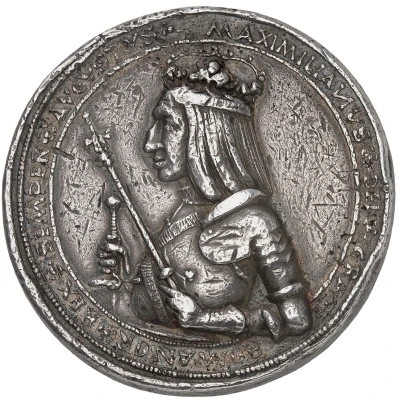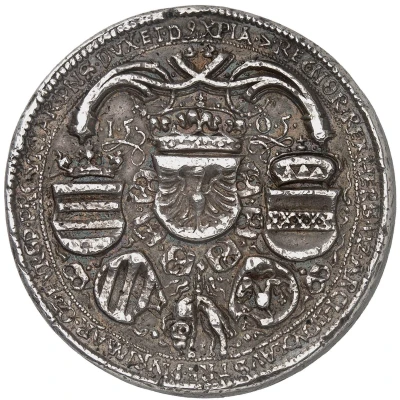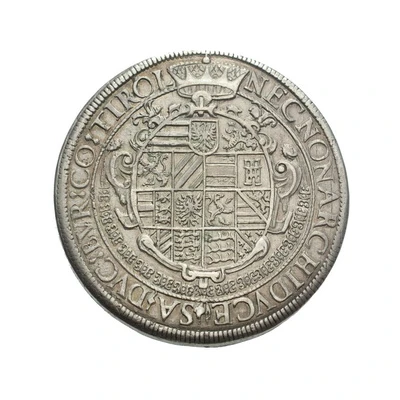


3 Schauguldiner - Maximilian I Hall
1505 year| Silver | 97.6 g | - |
| Issuer | Austrian Empire |
|---|---|
| Emperor | Maximilian I (1486-1519) |
| Type | Non-circulating coin |
| Year | 1505 |
| Value | 3 Guldiner |
| Currency | Thaler (1520-1754) |
| Composition | Silver |
| Weight | 97.6 g |
| Shape | Round (irregular) |
| Technique | Hammered |
| Orientation | Medal alignment ↑↑ |
| Demonetized | Yes |
| Updated | 2024-10-04 |
| Numista | N#354672 |
|---|---|
| Rarity index | 95% |
Reverse
Crowned shield with the Tyrol eagle, surrounded by the Order of the Golden Fleece necklace; on top gothic ornaments and the date ·1·5· - ·0·5·; to both sides the crowned arms of Old Hungary and Austria; below the smaller arms of Old-Burgundy and Habsburg.
The reverse is still designed under gothic influence.
Script: Latin
Lettering:
+XPIA·>·REGNOR·REX·HERS QZ ARCHIDVX·AVSTRE·PLVRIMAR·QZ ·EVROP·PROVICIAR·PNS·DVX·ET·D9
·1·5· ·0·5·
Unabridged legend: Christianitatis caeterorumque regnorum rex heresque archidux austriae plurimarumque europae provinciarum princeps dux et dominus
Translation: The Hereditary King of Christian as well as other Realms, Archduke of Austria and of very many lands Prince, Duke and Lord.
Engraver: Benedikt Burkhart
Edge
Plain
Comment
Maximilian liked commemorative coins with his own portrait, took interest in their design and gave them away as presents in order to promote his renown. The coins were much sought after by members of the nobility. They were issued in the weight of a Guldiner or its multiples and therefore rank as coins, not medals, even though they were not used as currency. Unlike small cast medals, these hammered pieces were intended for wide distribution. Maximilian's commemorative coins were artistically and technically a remarkable achievement of the Hall mint. They were minted there on the emperor's direct order and listed as "external expenditure".Interesting fact
One interesting fact about the 3 Schauguldiner - Maximilian I (Hall) 1505 coin is that it features a unique design element - a small hole in the center of the coin. This hole was intentionally drilled into the coin as a way to test the authenticity of the silver content. At the time, it was common for coins to be made of a mixture of metals, and the hole allowed people to verify that the coin was indeed made of pure silver. This feature is known as a "Schauguldiner" and is a distinctive characteristic of this particular coin.



